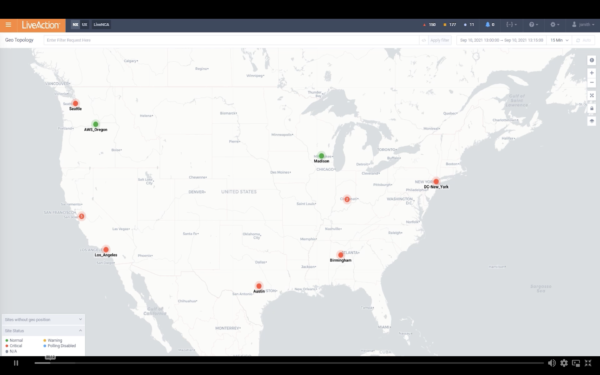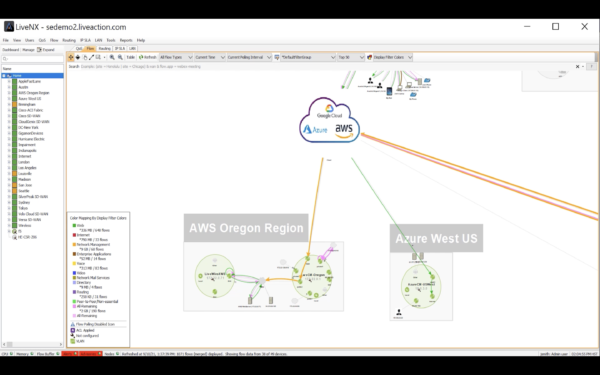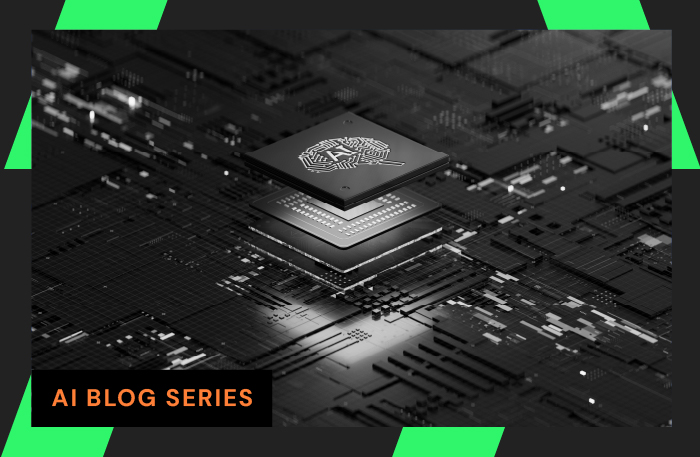
In 2023 organizations will move past their initial multi-cloud deployments and tweak their implementations for better cost control, security, and performance. According to a recent report by Flexera, 89% of organizations surveyed have a multi-cloud solution, and of those, 80% are using a hybrid-cloud solution.
The average respondent reported using 2.6 public and 2.7 private cloud environments: that’s an average of 5 cloud platforms per organization.
Flexera’s 2022 State of the Cloud Report
As enterprises adjust their multi-cloud solutions to meet their business objectives, they face the next hurdle: cloud monitoring.
Not just any monitoring will do. End-to-end cloud monitoring is necessary to deliver accurate visibility into the many public and private cloud instances organizations utilize.
This is where third-party cloud monitoring comes in, with flexible, vendor-agnostic monitoring options.
Let’s explore in greater depth what specific use cases make third-party cloud monitoring the monitoring strategy of choice.
7 Reasons You Need Third-Party Cloud Monitoring
1 – Complex Network Orchestration
Improve user-experience for IT teams across multi-cloud and hybrid cloud configurations. Having one third-party cloud monitoring tool standardizes practices for future deployments and makes detection easier.
Engineers can focus their attention on one tool instead of scattering troubleshooting efforts across different tools. Using multiple tools results in duplicative alerts, blind spots in coverage and discrepancies in data results. Native cloud monitoring tools come with their own indicators and logs that can be difficult to translate and unify in multi-cloud situations.
2 – Hybrid Cloud Reach
Many native cloud monitoring tools are limited to collecting data beyond their cloud-specific hosted applications. This compromises end-to-end visibility for applications that go from on-premise networks to the cloud. In Hybrid IT architectures, organizations need visibility into on-premise servers, off-premise colocation centers, and into the flow of traffic as it passes virtual private gateways.
Third-party cloud monitoring solutions can expand visibility into how traffic passes in and out of a VPC or VNET – critical for monitoring network security. A complete monitoring solution should provide unified visibility for data, whether on-premise, in the cloud, or in transit.
Monitoring has to span north-south and east-west traffic for precise troubleshooting triage and path flow and performance analysis.
3 – Network Visibility
Public cloud has a reputation for obstructing visibility into traffic flow as data passes over public networks. For example, a solution like Amazon’s AWS Elastic Computing (EC2) struggles to present how virtual resources communicate within the same subnet. Common blind spots in inter-availability zone traffic and how back-end applications and cloud services communicate create insufficient reporting for true cloud visibility.
A third-party cloud monitoring solution with these visibility features will empower engineer workflows:
- Application path visualization across different interfaces
- Resource utilization tracking
- Behavioral analysis of traffic as it passes through different tunnel segments across a network.
- Baseline creation of performance to compare against before and after network changes.
Monitoring products that focus on the engineer’s user experience improve the speed at which data can be acted upon. Intuitive graphs and topology maps present raw data in a way that can be quickly understood at a granular or global scale.


4 – Security Incident Response
With native cloud visibility, users can only see applications that the specific cloud provider hosts. To accurately assess network risks and how resources are impacted, visibility is needed into all application dependencies. Engineers need live views into what traffic is accepted or rejected to validate security configurations.
A third-party cloud monitoring tool that contains security components can alert you to unusual account activity. It may look at threat indicators like spikes in usage, uncommon IP address locations, and strange hours of usage. Third-party cloud monitoring can include AI-informed modeling that intelligently identifies false-positive alerts, unusual behavior, and activity coming from blacklisted DNS servers.
A modern cloud monitoring solution will also address encrypted traffic visibility by scanning the packet metadata against common threat characteristics. This approach is less invasive to data privacy and requires fewer resources than available decryption methods.
Examining what traffic is rejected and why helps catch early-stage risk factors like shade-tree unauthorized applications on the network or phishing attempts detected through redirects to scam sites.

5 – Predictable Cloud Costs
Cost planning in cloud environments is a top stressor for organizations. Research from Gartner finds that 95% of IT leaders rank cloud billing as the number 1 most confusing element in public cloud offerings. Cost consumption is more difficult to track and predict in the cloud because many are set in a pay-as-you-go structure like a utility like electricity or water. This confusion only increases if organizations utilize multiple cloud platforms or work in a hybrid model. Having one dashboard That can report on historical usage rates makes predicting resource consumption more manageable.
Third-party cloud solutions can unify reporting on application resource utilization and internet gateway function to establish a baseline of trends across multi-clouds.
Unified monitoring of resource use across multiple clouds or hybrid clouds allows engineers to see what type of cloud-hosted services (email servers, conference solutions, etc.) are using the most and least bandwidth and make tweaks to optimize application performance.
6 – Digital Transformation
Before embarking on a major network change like a cloud migration or SD-WAN deployment, baselines must be measured to prove the success and impact of the change on the network.
During network transitions, organizations may choose to phase their migration, moving specific applications, servers, or databases first, testing these changes, and then moving to the next phase of the migration. Having visibility into applications as they move from the core network into the cloud is a critical piece of a successful transition.
Third-party monitoring solutions can provide a bridge in that visibility gap as data as moves from cloud to cloud or from an on-premises environment to a cloud-hosted one for accurate baselining. Consider a solution with application path topology for easy visualization of migration status.
7 – Data Retention
Most native cloud monitoring tools are simple in their capabilities. Investing in a third-party tool expands the types of features available to organizations.
New federal and industry regulations require data retention over more extended periods of time for forensic investigations of network events and compliance proof. Data retention requirements can come from industry regulations like HIPAA, GDPR, PCI-DSS, and CCPA. There are also Government regulations like OMB 21-22, and separate FTC and IRS requirements for businesses. There are even international standards like the ISO/IEC 27040, ISO 9001, ISO 27001, and ISO 17068:2017.

Third-party cloud monitoring solutions can introduce concepts like intelligent packet capture that condense logs to maximize storage and extend the life of historic data.
Not only can third-party cloud monitoring help with proactive risk assessment, but it can also come in handy for forensic investigations once a breach has been discovered. Engineers need to retain network packets to determine both the fingerprint and the extent of the breach. Third-party cloud monitoring solutions can offer retention and storage capabilities, like intelligent PCAP that condenses packet data down to maximize storage, allowing for a longer look back.
About LiveAction
When organizations introduce the cloud, it changes the game for network monitoring, legacy tools are ineffective, and new blind spots appear.
LiveAction’s cloud monitoring delivers application and network performance visibility anywhere from the WAN edge, on-premise to the cloud and in-transit visibility. Get the maximum observability out of your network with accurate, interactive data reporting from one automated dashboard.
Does one of these 7 use cases apply to you? Solve your monitoring obstacles by overlaying LiveAction’s intelligent cloud monitoring solution.

